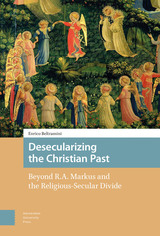



Digital Visual Culture presents the latest research into the relationship between theory and practice across digital media and technology in the visual arts and investigates the challenges of contemporary research and art curation, particularly in regard to new media artworks. The contributors to this volume discuss the impact of technological advances on visual art and the new art practices that are developing as a result. Many aspects of new interdisciplinary and collaborative practices are considered, such as net art and global locative environments, , and installations that are themselves performance, or games that often take place simultaneously online and in reality. Digital Visual Culture is an important addition to the ongoing discussion surrounding postmodern art practice in art and digital media.




With high-profile Academy Award nominations and an increasing number of big-name actors eager to sign on to promising projects, independent films have been at the forefront in recent years like never before. But the roots of such critical and commercial successes as The Hurt Locker and Precious can be traced to the first boom of independent cinema in the 1960s, when a raft of talented filmmakers emergedto capture the attention of a rapidly growing audience of young viewers.
A thorough overview of a thriving area of cultural life, Directory of World Cinema: American Independent chronicles the rise of the independent sector as an outlet for directors who challenge the status quo, yet still produce accessible feature films that not only find wide audiences but enjoy considerable box office appeal—without sacrificing critical legitimacy. Key directors are interviewed and profiled, and a sizeable selection of films are referenced and reviewed. More than a dozen sub-genres—including African American cinema, queer cinema, documentary, familial dysfunction, and exploitation—are individually considered, with an emphasis on their ability to engage with tensions inherent in American society. Copious illustrations and a range of research resources round out the volume, making this a truly comprehensive guide.
At a time when independent films are enjoying considerable cultural cachet, this easy-to-use yet authoritative guide will find an eager audience in media historians, film studies scholars, and movie buffs alike.



Though the spotlight is on the filmmakers, this new volume continues to consider a wide range of genres associated with Japanese cinema, including animation, contemporary independent cinema, J-Horror, the New Wave, period drama, science fiction, and yakuza.
Like its predecessors, Directory of World Cinema: Japan 3 endeavors to move scholarly criticism of Japanese film out of the academy and into the hands of cinephiles the world over. This volume will be warmly welcomed by those with an interest in Japanese cinema that extends beyond its established names to equally remarkable filmmakers who have yet to receive such rigorous attention.

From the revered classics of Akira Kurosawa to the modern marvels of Takeshi Kitano, the films that have emerged from Japan represent a national cinema that has gained worldwide admiration and appreciation. The Directory of World Cinema: Japan provides an insight into the cinema of Japan through reviews of significant titles and case studies of leading directors, alongside explorations of the cultural and industrial origins of key genres.
As the inaugural volume of an ambitious new series from Intellect documenting world cinema, the directory aims to play a part in moving intelligent, scholarly criticism beyond the academy by building a forum for the study of film that relies on a disciplined theoretical base. It takes the form of an A–Z collection of reviews, longer essays, and research resources, accompanied by fifty full-color film stills highlighting significant films and players. The cinematic lineage of samurai warriors, yakuza enforcers, and atomic monsters take their place alongside the politically charged works of the Japanese New Wave, making this a truly comprehensive volume.
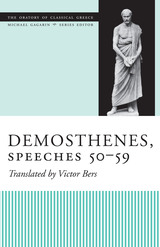
This is the sixth volume in the Oratory of Classical Greece. This series presents all of the surviving speeches from the late fifth and fourth centuries BC in new translations prepared by classical scholars who are at the forefront of the discipline. These translations are especially designed for the needs and interests of today's undergraduates, Greekless scholars in other disciplines, and the general public.
Classical oratory is an invaluable resource for the study of ancient Greek life and culture. The speeches offer evidence on Greek moral views, social and economic conditions, political and social ideology, law and legal procedure, and other aspects of Athenian culture that have been largely ignored: women and family life, slavery, and religion, to name just a few.
Demosthenes is regarded as the greatest orator of classical antiquity; indeed, his very eminence may be responsible for the inclusion under his name of a number of speeches he almost certainly did not write. This volume contains four speeches that are most probably the work of Apollodorus, who is often known as "the Eleventh Attic Orator." Regardless of their authorship, however, this set of ten law court speeches gives a vivid sense of public and private life in fourth-century BC Athens. They tell of the friendships and quarrels of rural neighbors, of young men joined in raucous, intentionally shocking behavior, of families enduring great poverty, and of the intricate involvement of prostitutes in the lives of citizens. They also deal with the outfitting of warships, the grain trade, challenges to citizenship, and restrictions on the civic role of men in debt to the state.

A survey of a vibrant—and expanding—industry, Directory of World Cinema: China 2 examines, among other themes, China’s desire for success and fulfillment in the United States, as well as the extensive history of representing China—and the Chinese in America—on US movie screens. With contributions from some of the leading academics in the field, this volume will be essential reading for all fans of Chinese film.


Bevan combs through world history to highlight a range of wars and conflicts in which the destruction of architecture was pivotal. From Cortez’s razing of Aztec cities to the carpet bombings of Dresden and Tokyo in World War II to the war in the former Yugoslavia, The Destruction of Memory exposes the cultural war that rages behind architectural annihilation, revealing that in this subliminal assault lies the complex aim of exterminating a people. He provocatively argues for “the fatally intertwined experience of genocide and cultural genocide,” ultimately proposing the elevation of cultural genocide to a crime punishable by international law.
In an age in which Frank Gehry, I. M. Pei, and Frank Lloyd Wright are revered and yet museums and temples of priceless value are destroyed in wars around the world, Bevan challenges the notion of “collateral damage,” arguing that it is in fact a deliberate act of war.

Bevan combs through world history to highlight a range of wars and conflicts in which the destruction of architecture was pivotal. From Cortez’s razing of Aztec cities to the carpet bombings of Dresden and Tokyo in World War II to the war in the former Yugoslavia, The Destruction of Memory exposes the cultural war that rages behind architectural annihilation, revealing that in this subliminal assault lies the complex aim of exterminating a people. He provocatively argues for “the fatally intertwined experience of genocide and cultural genocide,” ultimately proposing the elevation of cultural genocide from “collateral damage” to a crime punishable by international law.
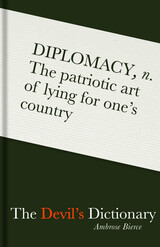
A contemporary of Mark Twain, Bierce brought his biting humor to bear on spoof definitions of everyday words, writing deliberate mistranslations of the vocabulary of the establishment, the church, and the politics of his day, and shining a sardonic light on hypocrisy and deception. These columns formed the beginnings of a dictionary, first published in 1906 as The Cynic’s Word Book, which stopped at the letter L, and five years later as a full A–Z text known as The Devil's Dictionary. More than one hundred years later, Bierce’s redefinitions still give us pause for thought: interpreting reporter, for example, as “a writer who guesses his way to the truth and dispels it with a tempest of words”; un-american as “wicked, intolerable, heathenish”; and politics as “the conduct of public affairs for private advantage.” This timely new edition of Bierce’s irreverent and provocative dictionary is the perfect gift for misanthropes and word lovers alike.
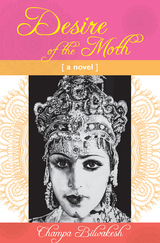
Hear Champa Bilwakesh reading from Desire of the Moth here: http://voicethread.com/myvoice/#thread/5863247/30058528/31699244
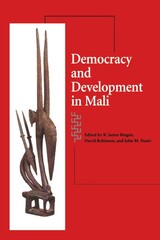
During the past twenty-five years, the scholarly research and applied development work of Michigan State University faculty and students in Mali represents the most significant combined, long-term, and continuing contribution of any group of university faculty in the United States or Europe to the study of Malian society, economy, and politics. The applied nature of much of this work has resulted in a significant number of working papers, reports, and conference presentations. This volume represents a coherent and connected set of essays from one American university with a widely known and highly respected role in African development. While the essays identify and review Mali's unique historical and contemporary path to democracy and development, they also contribute to the advancement of theoretical knowledge about African development.

Since the 1970s, the works of filmmakers from the nations of Eastern Europe— among them, Krzysztof Kieslowski, Béla Tarr, István Szabó, and Jirí Menzel—have experienced an international upsurge in popularity. Charting the trends of the national cinemas of Poland, Hungary, and Yugoslavia, as well as the lesser-known industries of Serbia, Slovakia, and Romania, this new volume in the Directory of World Cinema series explores important genres in the cinema of Eastern Europe, including war films, new wave, comedies, and surrealist art cinema, with essays on the most prolific filmmakers, in-depth reviews of key titles, and suggested resources for further study. Fifty full-color stills round out this invaluable guide to the burgeoning cinema of Eastern Europe.




Defoe was an outsider, a man of many interests whom Black asserts evades too precise a portrait or coherent description of character and career. But he is a traveler, in the literal and imaginative senses, and in his engagement with life and its issues and willingness to associate with 'low-life' prefigures later literary giants like Smollett and Fielding. More than the establishment of genre, Defoe created the writer "whose business is observation." Black's account of this parcel of the British past is impeccable because it is in fact an account that the past, in Defoe, gives of itself. "As a writer, Defoe brought together a reality usually presented as, and endorsed by, history, with the imaginative focus of storytelling, and the direction of, variously, propaganda, analysis, and exemplary tale."
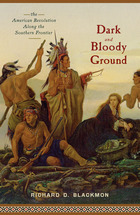
The American Revolution marked a dramatic change in the struggle for land along the southern frontier. In the colonial era, American Indian leaders and British offi cials attempted to accommodate the westward expansion of Anglo-Americans through land cessions designed to have the least impact on Indian societies. The region remained generally peaceful, but with the onset of the Revolution, the British no longer exercised sole authority to curb the settlements appearing within territory claimed by the Creeks, Shawnee, and most importantly, the Cherokee. Whether it was to escape the economic uncertainty of the east, the rigors of the confl ict, or the depredations of troops and militias on both sides, settlers fl ooded west. Under these conditions, the war in the south took on a savage character as Indians, Loyalists, and Whigs all desperately fought to defend their communities and maintain control of their own destinies. Taking advantage of the political turmoil in the east, the Cherokee Nation launched a coordinated offensive in 1776 against illegal frontier settlements. The Whigs responded with a series of expeditions from each of the Southern colonies that razed Cherokee towns and their food supplies. All the while, both British and Whig leaders walked a fi ne line: If the Indians attacked settlers without distinguishing between Loyalists and Whigs, those groups could unite and thwart both British and Indian interests; if the Indians attacked the western frontier with Loyalist and British support, the Whigs would face a two-front war—an event that ended up happening.
In Dark and Bloody Ground: The American Revolution Along the Southern Frontier, Richard Blackmon uses a wealth of primary source material to recount the confl ict between American Indians and Anglo-Americans in the colonial South during one of the most turbulent periods of North American history. He explains the complex points of contact in Georgia, Kentucky, North Carolina, South Carolina, Tennessee, and Virginia between native groups and settlers, while revealing the political gamesmanship between rival British and Whig traders and offi cials to secure Indian loyalty. The author also explains the critical role of the southern frontier to the American victory, a victory achieved long after the decision at Yorktown. Before the war, clashes between Cherokee and Shawnee hunters in Kentucky had become so commonplace that it was known as a “dark and bloody ground.” With the rise in Anglo-American settlements there, led by Daniel Boone and others, the dark and bloody ground became a metaphor for the entire struggle for the Southern frontier.
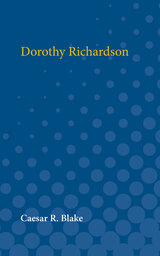

Published annually, the journal Dumbarton Oaks Papers was founded in 1941 for the publication of articles relating to Byzantine civilization.
In this issue: Audrey Becker, “Verbal and Nonverbal Diplomatic Communication at the Imperial Court of Constantinople (fifth–sixth Centuries)”; Alexandra Wassiliou-Seibt and Andreas Gkoutzioukostas, “The Origin and the Members of the Kamytzes Family: A Contribution to Byzantine Prosopography”; Michael Zellmann-Rohrer, “‘Psalms Useful for Everything’: Byzantine and Post-Byzantine Manuals for the Amuletic Use of the Psalter”; Raymond Van Dam, “Eastern Aristocracies and Imperial Courts: Constantine’s Half-Brother, Licinius’s Prefect, and Egyptian Grain”; Daniel Caner, “Not a Hospital but a Leprosarium: Basil’s Basilias and an Early Byzantine Concept of the Deserving Poor”; Paul Botley, “Greek Literature in Exile: The Books of Andronicus Callistus, 1475–1476”; Aude Busine, “The Dux and the Nun: Hagiography and the Cult of Artemios and Febronia in Constantinople”; Benjamin Garstad, “Dionysiac and Christian Elements in the Lysos Episode in the Greek Alexander Romance (β rec.).”



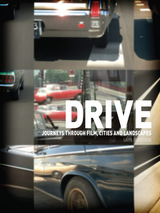
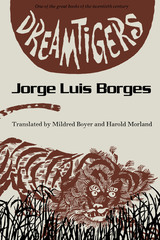
Dreamtigers has been heralded as one of the literary masterpieces of the twentieth century by Mortimer J. Adler, editor of Great Books of the Western World. It has been acknowledged by its author as his most personal work. Composed of poems, parables, and stories, sketches and apocryphal quotations, Dreamtigers at first glance appears to be a sampler—albeit a dazzling one—of the master's work. Upon closer examination, however, the reader discovers the book to be a subtly and organically unified self-revelation.
Dreamtigers explores the mysterious territory that lies between the dreams of the creative artist and the "real" world. The central vision of the work is that of a recluse in the "enveloping serenity " of a library, looking ahead to the time when he will have disappeared but in the timeless world of his books will continue his dialogue with the immortals of the past — Homer, Don Quixote, Shakespeare. Like Homer, the maker of these dreams is afflicted with failing sight. Still, he dreams of tigers real and imagined and reflects upon of a life that, above all, has been intensely introspective, a life of calm self-possession and absorption in the world of the imagination. At the same time he is keenly aware of that other Borges, the public figure about whom he reads with mixed emotions: "It's the other one, it's Borges, that things happen to."
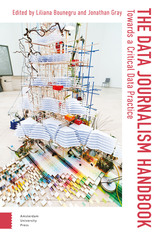
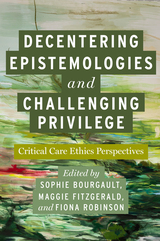
This book advances this project by discussing the ways care ethics contributes to the de-centering of dominant epistemologies and to the challenging of privilege, and by considering how to decenter care ethics itself via an encounter with non-Western philosophical traditions and alternative epistemologies. Written by scholars from different countries, disciplines, and intellectual traditions, the volume offers original care ethics contributions on epistemic injustice, privileged irresponsibility, ecofeminism, settler colonialism, social movements such as BLM, and on various racialized and gendered inequities tied to care work.

Each chapter explores a different facet of the war and masculinity in depth. Joanna Bourke discovers that those who were dismembered and disabled by the war were not viewed as passive or weak, like their civilian counterparts, but were the focus of much government and public sentiment. Those suffering from disease were viewed differently, often finding themselves accused of malingering.
Joanna Bourke argues convincingly that military experiences led to a greater sharing of gender identities between men of different classes and ages. Dismembering the Male concludes that ultimately, attempts to reconstruct a new type of masculinity failed as the threat of another war, and with it the sacrifice of a new generation of men, intensified.
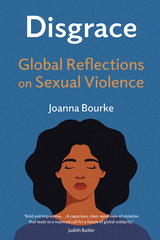
Disgrace is the first truly global history of sexual violence. The book explores how sexual violence varies widely across time and place, from nineteenth-century peasant women in Ireland who were abducted as a way of forcing marriage, to date-raped high-school students in twentieth-century America, and from girls and women violated by Russian soldiers in 1945 to Dalit women raped by men of higher castes today. It delves into the factors that facilitate violence—including institutions, ideologies, and practices—but also gives voice to survivors and activists, drawing inspiration from their struggles. Ultimately, Joanna Bourke intends to forge a transnational feminism that will promote a more harmonious, equal, and rape- and violence-free world.
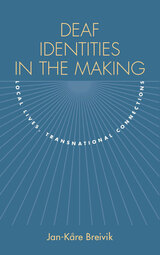
In his revolutionary new book, Jan-Kåre Breivik profiles ten Norwegian Deaf people and their life stories within a translocal/transnational framework. Breivik notes that, unlike hearing people, who form their identities from familial roots and local senses of place, deaf individuals often find themselves distanced from their own families and akin to other deaf people in far locations. His study records emerging deaf identities, which he observes are always in the making, and if settled, only temporarily so. To capture the identification processes involved, he relies upon a narrative perspective to trace identity as temporarily produced through autobiographical accounts or capsule life stories. As a result, he has produced striking, in-depth accounts of how core questions of identity are approached from different deaf points of view.
The ten stories in Deaf Identities in the Making reveal deaf people who would like a stronger link to the Deaf world. Each story sheds different light on the overriding, empowering master narrative that has become an integral feature of the Deaf community. Like success stories from other minorities, the Deaf life story reinforces the collective empowerment process in a Deaf social milieu. Because of these revelations, Breivik’s findings easily reverberate globally in conjunction to the striking similarities of deaf lives around the world, particularly those connected with the experiences of being translocal signers who have struggled for identity in an overwhelmingly hearing context.
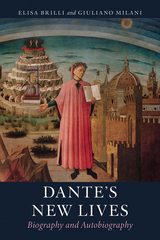
Numerous books have attempted to chronicle the life of Dante Alighieri, yet essential questions remain unanswered. How did a self-taught Florentine become the celebrated author of the Divine Comedy? Was his exile from Florence so extraordinary? How did Dante make himself the main protagonist in his works, in a literary context that advised against it? And why has his life interested so many readers? In Dante’s New Lives, eminent scholars Elisa Brilli and Giuliano Milani answer these questions and many more. Their account reappraises Dante’s life and work by assessing archival and literary evidence and examining the most recent scholarship. The book is a model of interdisciplinary biography, as fascinating as it is rigorous.
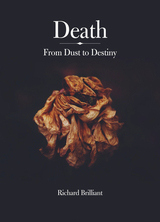
Brilliant examines the ways that an individual’s ethos can live on long after the biological body perishes. It does so through the collective memories of survivors, being passed down to subsequent generations. Such “remainings” are created by rituals and reinforced through commemorations and obituaries and projected through art and architecture. These powerful inducements to remember counter the finality of physical death, bridging the gap between absence and presence. Weaving together a rich collection of texts and images and guiding them with deeply meaningful insights, Brilliant offers a reflective meditation on the methods that artists, architects, and writers have developed to activate memory and animate their subjects into robust afterlife. In this way, he shows, death need no longer be seen as a terminal departure but rather a transformation into a new form of existence, one carried on by the communion of others.

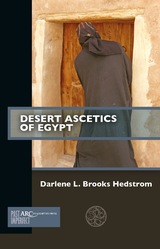


Film scholar Mark Browning examines Cronenberg’s literary aesthetic not only in relation to his films’ obvious source material, but by comparing his movies to the writings of Vladimir Nabokov, Angela Carter, and Bret Easton Ellis. This groundbreaking volume addresses Cronenberg’s narrative structures and his unique conception of auteurism, as well as his films’ shocking psychological frameworks, all in the broader context of film adaptation studies. David Cronenberg is an essential read for anyone interested in the symbiotic relationship between literature and filmmaking.
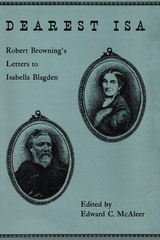
Edited by Edward C. McAleer
Robert Browning's friendship for Isabella Blagden was almost as remarkable as was his love for Elizabeth Barrett. After Elizabeth's death (June 1861), Browning went to England to educate their son, but he hoped eventually to return to Italy, principally so that he might be near his friend "Isa." He asked her to write to him once a month on the twelfth, promising to answer her letter on the nineteenth.
The fulfillment of this obligation resulted in a correspondence which is remarkable from the standpoint of continuity. Most collections of letters suffer from their fragmentary form; there are no continuing threads of interest which hold them together. Not so the letters which Browning wrote to Miss Blagden. They are not in the great English letter writing tradition, being obviously written for Isa rather than for posterity, but they are filled with the most intimate and interesting sort of gossip and informal exchanges of ideas which give them a character all their own.
One hundred and fifty-four letters from Browning to Isabella Blagden are known to be in existence; all of them are included in the present volume, together with copious explanatory notes and an illuminating introduction.
Edward C. McAleer has approached every detail of his editorial task with thoroughness, imagination, and skill. His notes will add immeasurably to the pleasure of reading the letters, in addition to making a substantial contribution to the world's knowledge of Browning and his associates.

Over the last two decades, the field of audiovisual media has changed dramatically. Until recently, there was only a small number of technologies, distribution channels were few, and moving images were largely limited to cinemas, televisions, galleries, or art museums. Also, both the producers and the audiences of such content clearly identified as human beings. Those days are over.
The digitization of image production and distribution ushered in a massive disruption to the traditional landscape of the moving image that had existed since the advent of the audiovisual industry. Touching on discussions such as child producers, the marketing interests of big corporations, and the origins of new media formats and practices, Display, Distribute, Disrupt maps the new conditions for creative work in the ever-widening sphere of audiovisual media.
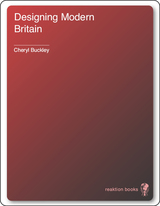
British culture is marked by indelible icons—red double-decker buses, large oak wardrobes, and the compact sleekness of the Mini. But British industrial and product design have long lived in the shadows of architecture and fashion. Cheryl Buckley here delves into the history of British design culture, and in doing so uniquely tracks the evolution of the British national identity.
Designing Modern Britain demonstrates how interior design, ceramics, textiles, and furniture craft of the twentieth century contain numerous hallmark examples of British design. The book explores topics connected to the British design aesthetic, including the spread of international modernism, the eco-conscious designs of the 1980s and 1990s, and the influence of celebrity product designers and their labels. Buckley also investigates popular nostalgia in recent times, considering how museum and gallery exhibitions have been instrumental in reimagining Britain’s past and how the heritage industry has fueled a growing trend among designers of employing images of British culture in their work.

Daniel Shays’s Honorable Rebellion: An American Story by Daniel Bullen tells the history of the crisis from the protesters’ perspective. Through five months of nonviolent protests, the farmers kept courts throughout Massachusetts from hearing foreclosures, facing down threats from the government, which escalated to the point that Governor James Bowdoin ultimately sent an army to arrest them. Even so, the people won reforms in an electoral landslide.
Thomas Jefferson called these protests an honorable rebellion, and hoped that Americans would never let twenty years pass without such a campaign, to rein in powerful interests. This riveting and meticulously researched narrative shows that Shays and his fellow protesters were hardly a dangerous rabble, but rather a proud people who banded together peaceably, risking their lives for justice in a quintessentially American story.
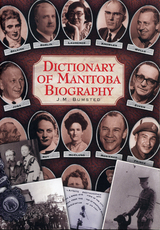
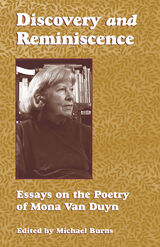
A former United States Poet Laureate, winner of a Pulitzer Prize, and recipient of numerous grants and awards, Mona Van Duyn has been hailed as one of our greatest living American poets. To help broaden and uniquely inform our understanding of Van Duyn’s work, editor Michael Burns has gathered ten essays, a poem, a succinct biographical sketch, and Van Duyn’s own laureate address to the Library of Congress.
In the first section of this collection, poets Maxine Kumin and Carolyn Kizer provide tributes that elucidate the special effect Van Duyn’s poetry has had on their work and thought. Pulitzer Prize–winner Richard Howard contributes a poem that both extols the qualities of Van Duyn’s poems and lyrically places those qualities within her contemporary scene.
The second section contains eight essays exploring aspects as varied as Van Duyn’s penchant for particularity, her remarkable ability to rediscover for us the strangeness of everyday living, and her elegant style, fluid in both free verse and form. Included are contributions from Stephen Yenser, Rachel Hadas, Emily Grosholz, Sidney Burris, Ann Townsend, Michael Bugeja, Wyatt Prunty, and Jane Hoogestraat.
The final section opens with Van Duyn’s witty and incisive overview of the state of poetry in America at the close of the twentieth century. Also included is a short narrative history of Van Duyn’s literary career. Filled with keen prose by distinguished poets and critics, this collection is not only a resounding tribute to one poet’s body of work, but also a timely pulse-taking of the literary scene surrounding Van Duyn’s poetry.
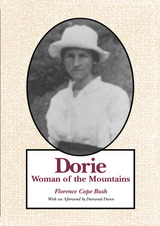
Dorie's story begins with her childhood on an isolated mountain farm, where we see first hand how her parents combined back-breaking labor with intense personal pride to produce everything their family needed—from food and clothing to tools and toys—from the land. Lumber companies began to invade the mountains, and Dorie's family took advantage of the financial opportunities offered by the lumber industry, not realizing that in giving up their lands they were also letting go of a way of life. Along with their machinery, the lumber companies brought in many young men, one of whom, Fred Cope, became Dorie's husband. After the lumber companies stripped the mountains of their timber, outsiders set the area aside as a national park, requiring Dorie, now married with a family of her own, to move outside of her beloved mountains.
Through Dorie's eyes, we see how the mountain farmers were forced to abandon their beloved rural life-style and customs and assimilate into cities like Knoxville, Tennessee. Her experiences were shared by hundreds of Appalachians during the early twentieth century. However, Dorie's perseverance, strength of character, and deep love of the Smokies make this a unique and moving narrative.
The Author: Florence Cope Bush is a former newspaper reporter and freelance writer in Knoxville, Tennessee. She is the author of Ocona Lufte Baptist—Pioneer Church of the Smokies, and a regular contributor to Smoky Mountain Historical Society publications.
Durwood Dunn is professor history at Tennessee Wesleyan College. He is author of Cades Cove: The Life and Death of a Southern Appalachian Community, 1818-1937.
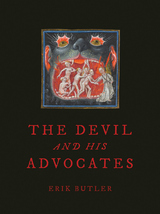

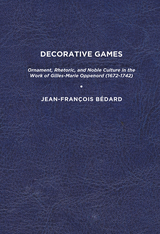
This book features an extraordinary album of ornament designs by the French architect Gilles-Marie Oppenord (1672-1742). In charge of the buildings and grounds of Philippe, duke of Orléans, regent of France during the minority of Louis XV, Oppenord was at the center of the architectural practice of his time. As made evident by this album, his consummate draftsmanship, praised by his contemporaries and coveted by collectors, exceeded by far the practical demands usually required of architects.
On a copy of the first French edition of Cesare Ripa’s Iconologia, published by Jean Baudoin in 1636 with engravings by Jacques de Bié, Oppenord drew vignettes, head and tail pieces, borders and other ornamental motifs. For the first time, this publication reproduces Oppenord’s album in its initial state. Today’s reassembled and rebound album of sixty sheets bears little resemblance to Oppenord’s original copy. A bibliographic analysis of the Ripa-Baudoin book, based on a copy kept at the Bibliothèque nationale de France, and confirmed by a previously unnoticed numbering by Oppenord, guided this first reconstitution. In lieu of a haphazard succession of sketches, it reveals Oppenord’s fascinating interplay between text, engraved and drawn images.
Published by University of Delaware Press. Distributed worldwide by Rutgers University Press.
Despite recent technological changes that have digitized many forms of artistic creation, the practice of drawing, in the traditional sense, has remained constant. However, many publications about this subject rely on discipline-dependent distinctions to discuss the activity’s function. Drawing: The Enactive Evolution of the Practitioner redefines drawing more holistically as an enactive phenomenon, one reliant on motor responses, and makes connections between a variety of disciplines in order to find out what happens when we draw. Instead of the finite event of producing an artifact, drawing is a process and an end in itself. By synthesizing enactive thinking and the practice of drawing, this volume provides valuable insights into the creative mind, and will appeal to scholars and practitioners alike.

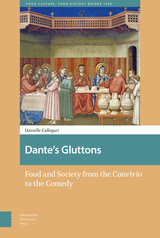

Dante's Craft was first published in 1969. Minnesota Archive Editions uses digital technology to make long-unavailable books once again accessible, and are published unaltered from the original University of Minnesota Press editions.
In a series of nine essays, Professor Cambon discusses Dante's language and style and the influence of his poetry on later writers. The first section, a group of six essays, is devoted to the critical studies of Dante's own work. A second section consists of chapters devoted to Dante's influence on the eighteenth-century Italian philosopher Giambattista Vico, on certain American writers, chiefly Herman Melville, Nathaniel Hawthorne, Ezra Pound, and T.S. Eliot, and on the contemporary Italian poet Eugenio Montale.
The pertinence of Dante today is emphasized by Professor Cambon in his introduction to the volume. He writes: "Dante's viability for modern literature springs from the depth and latitude of his own probing into the tangled darkness and light of human existence; and, as some of the essays here collected attempt to show, I have come to believe that Dante can give invaluable clues to the reader of contemporary poetry, whether in its expression of derangement in a new Dark Wood or in its rare glimpses of felicity and wholeness."

Christians talked, debated, and wrote dialogues in late antiquity and on throughout Byzantium. Some were philosophical, others more literary, theological, or Platonic; Aristotle also came into the picture as time went on. Sometimes the written works claim to be records of actual public debates, and we know that many such debates did take place and continued to do so. Dialoguing in Late Antiquity takes up a challenge laid down by recent scholars who argue that a wall of silence came down in the fifth century AD, after which Christians did not “dialogue.”
Averil Cameron now returns to questions raised in her book Christianity and the Rhetoric of Empire (1991), drawing on the large repertoire of surviving Christian dialogue texts from late antiquity to make a forceful case for their centrality in Greek literature from the second century and the Second Sophistic onward. At the same time, Dialoguing in Late Antiquity points forward to the long and neglected history of dialogue in Byzantium. Throughout this study, Cameron engages with current literary approaches and is a powerful advocate for the greater integration of Christian texts by literary scholars and historians alike.
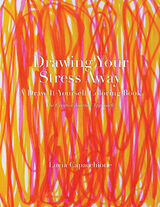

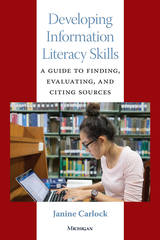
This text has been structured around the six critical elements of the ACRL Framework for Information Literacy in Higher Education, contextualizing these elements by fitting them into the research and writing process. The book focuses on providing students with the critical-thinking and problem-solving skills needed to: (1) identify the conversation that exists around a topic, (2) clarify their own perspective on that topic, and (3) efficiently and effectively read and evaluate what others have said that can inform their perspective and research. The critical-thinking and problem-solving skills practiced here are good preparation for what students will encounter in their academic and professional lives.
As an experienced writing instructor, the author has evaluated the final written products of hundreds of students who were trained through one-shot workshops and first-year introductory courses. She has applied that knowledge to create the tasks in this book so that students have the skills to successfully find, evaluate, and use sources and then produce a paper that incorporates valid research responsibly and effectively.
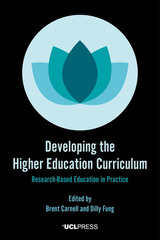

On many Sundays, Black New Orleanians dance through city streets in Second Lines. These processions invite would-be spectators to join in, grooving to an ambulatory brass band for several hours. Though an increasingly popular attraction for tourists, parading provides the second liners themselves with a potent public expression of Black resistance.
Rachel Carrico examines the parading bodies in motion as a form of negotiating and understanding power. Seeing pleasure as a bodily experience, Carrico reveals how second liners’ moves link joy and liberation, self and communal identities, play and dissent, and reclamations of place. As she shows, dancers’ choices allow them to access the pleasure of reclaiming self and city through motion and rhythm while expanding a sense of the possible in the present and for the future.
In-depth and empathetic, Dancing the Politics of Pleasure at the New Orleans Second Line blends analysis with a chorus of Black voices to reveal an indelible facet of Black culture in the Crescent City.

The theater of Agustín Moreto y Cavana (1618–1669) badly needs reevaluation. Present estimation of the work of this Spanish playwright has frozen into a sterile pattern of praise for his technical skill and disapproval of his borrowings. There has been uncritical acceptance of the contention that Moreto's plays are simple reworkings, and no real effort has been made to assess the relevance of this generally accepted belief.
The road to a fair estimation and appreciation of Moreto, Frank Casa believes, is through a rigorous investigation of his plays and their sources. To achieve this purpose he has carefully selected five different comedias, of varying degrees of indebtedness to earlier works: a hagiographic play, San Franco de Sena; El licenciado Vidriera, based on Cervantes' short story; a reinterpretation of a classical theme, Antíoco y Seleuco; a reworked drama, El valiente justiciero; and the comedy El lindo don Diego. In each case he analyzes the original, then the Moreto version, pointing out differences in characterization, attitudes, dramatic elaboration, and themes. Casa proves that, in spite of their similarity to works of predecessors, Moreto's plays should be considered independent literary creations and their author a dramatist with a high degree of artistic integrity.
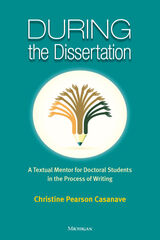
This volume is a sequel to Casanave’s popular Before the Dissertation. Like that volume, this book is designed as a companion for doctoral dissertation writers of qualitative or mixed methods work in fields related to language education. It could also benefit those writing master’s theses and those writing in other social science fields. It is meant to be consulted once the writing has begun—once students have settled on a topic, designed the project, or collected the data—because this is the time when they are analyzing, drafting, revising, polishing, and probably fretting, deleting, reconstructing, and even losing sleep. Also, like its predecessor, it is not designed to teach anyone how to write a dissertation as there are plenty of those available elsewhere.
For most doctoral students, writing will happen at different stages of the project. Strategies for timing of these kinds of writing differ across students, and also across supervisors and advisers. If dissertation writers do not know by the time they start writing which strategies and issues pertain to them, this book can help them craft some approaches to suit their own personalities, preferred practices, and individual goals and visions, as well as help them figure out how dissertation writing might fit into the real-life intrusions of work and family.
Issues covered in the book are: starting to write, envisioning the project as a whole, relationships with supervisors, perfectionism and other maladies, health, low- and high-IQ days, loneliness and isolation, distractions and interruptions, revising, and knowing when to stop.
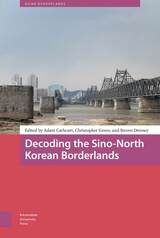
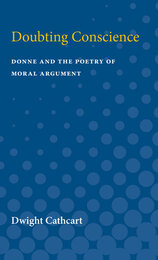
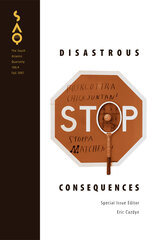
From the fields of anthropology, architecture, cultural studies, economics, epidemiology, journalism, and philosophy, the contributors argue that disasters do not only follow from things going horribly wrong (extreme weather, economic collapse, urban decay). Often they are the predictable results of things going according to plan. The meaning of disaster itself is challenged, theorized again, and reconceptualized.
One essay argues that media reports during Hurricane Katrina worked to deny or disguise institutionalized racism, suppressing potential dissent and controversy. Another examines how the state bureaucracy reinforces cycles of death, disease, and poverty in South Africa. A third explores the devastating conditions of everyday life in Detroit that no longer register in the political imaginary of the United States. Still another investigates the connection between unusual weather events and the workings of the Communist Party in Poland. Finally, the renowned architect Isozaki Arata plays with the idea of urban planning in two short fables introduced by Fredric Jameson.
Contributors. Eric Cazdyn, Isobel S. Frye, Jerry Herron, Peter Hitchcock, Isozaki Arata, Fredric Jameson, Walter Kalaidjian, Leszek Koczanowicz, Leah Schinasi, Neil Smith, Carol A. Stabile, Imre Szeman, Steve Wing

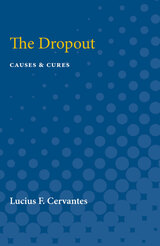

As in the ever-changing English language, Brazilian Portuguese is colorful and ever-changing in its gíria or slang (from the simply conversational to the vulgar)—and advanced students are often only exposed to the formal or classic literary forms of the language. A Dictionary of Informal Brazilian Portuguese, originally published in 1983, remains a profitable reference tool to help bridge the gap between the classroom and the streets and contemporary literature of Brazil. Beyond students and researchers, this dictionary, containing over 7500 Brazilian expressions, will be invaluable to travelers, businesspeople, translators and others who are seeking insight into the rich nuances to be found in informal Brazilian Portuguese. Enhanced often with Portuguese sentences to place the words or phrases in context, this dictionary will reward the reader with the colorful inventiveness of the language—and this is not bafo-de-boca (hot air!).
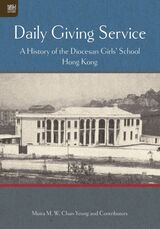
The Diocesan Girls’ School is one of Hong Kong’s oldest girls’ schools, founded during British rule in 1860. As an alumna of the school’s Class of 1955, Professor Moira Chan-Yeung traces the history of her alma mater from its establishment through its development over the last 150 years in Daily Giving Service. Having grown alongside Hong Kong as it expanded from a small city to a global metropolitan center, Diocesan has become one of the most prominent girl’s schools in the city and serves a significant role in the history of education and growth in the region. With contributions from other alumni, this book recounts various aspects of school life throughout different eras, illustrating the connection between the socioeconomic development of Hong Kong and this cornerstone of regional education.
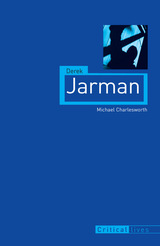

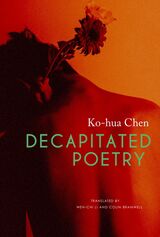
Ko-hua Chen’s Decapitated Poetry was the first explicitly queer book of poems published in Taiwan and remains a foundational work in Taiwanese poetry. Decades after it first appeared in 1995, this collection retains the capacity to shock, appall, and jolt readers into recognizing homosexuality as its own specific category of being. Behind Chen’s depictions of the disjunctive realities of queer erotic life, a formidable and uncompromising poetic intelligence can be seen at play. Alongside the erotic, satirical offerings from Decapitated Poetry, this volume includes selections from Chen’s remarkable sci-fi sequences that offer further transcorporeal meditations on forbidden queer love. Excoriating, heretical, tender, and always alive to the transgressive potential of language, this exhilarating volume from Seagull’s Pride List is the perfect introduction to one of Taiwanese poetry’s most daring voices.

To answer these questions, this book draws on an original dataset of post-election responses encompassing over 300 political parties, which participated in 270 elections held in twenty-two countries of Eastern Europe and the former Soviet Union over a period of more than two decades. In doing so, it offers a new theoretical framework for studying electoral compliance in comparative perspective and advances research on democratic transition, democracy promotion, post-election protests, and party politics.
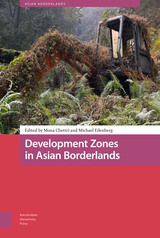
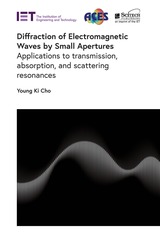

A small group of islands off the coast of Newfoundland—Saint Pierre, Île aux Marins, and Miquelon-Langlade—comprises France’s last territorial possession in North America. Most of the population lives on the island of Saint Pierre in the town of the same name, which is the archipelago’s only real harbor. During the last two centuries, various issues have placed the inhabitants of Saint Pierre in opposing groups, but no question divided them so precisely along latent social and economic lines as did the choice required of them in 1940–1941. The nature of the Free French–Vichy confrontation touched Saint Pierre society at its most vulnerable point.
Students of France will find that the story of Saint Pierre is in many ways the story of twentieth-century France in microcosm. But this fascinating account also provides a case study in the ideological repercussions of social and economic change. Using a combination of anthropological fieldwork and historical research, William Christian examines the social ideas, social conflicts, and economy of the island from 1900 to the present. He shows that the Pétainist–Gaullist division was a culminating step in a trend that had been going on since the beginning of the century, the direct result of economic decline, rising aspirations, and the substitution of government welfare for a system of private aid and credit. The division is analyzed in terms of social structure in conjunction with essential differences in the world views of the two parties. The author illustrates the stages in the evolution of personal and group quarrels and develops the concept of an “information set,” a social unit defined by the communication and sharing of private information.
In the conclusion of this lively social history, Christian discusses the role of the idea of the “community as a family” and its decline in Saint Pierre during the last sixty years.
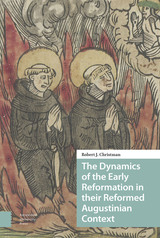
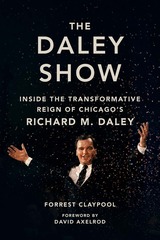
A two-time Daley chief-of-staff, Forrest Claypool draws on his long career in local government to examine the lasting successes, ongoing dramas, and disastrous failures that defined Daley’s twenty-two years in City Hall. Throughout, Claypool uses Daley’s career to illustrate how effectual political leadership relies on an adept and unapologetic use of power--and how wielding that power without challenge inevitably pulls government toward corruption.
A warts-and-all account of a pivotal figure in Chicago history, The Daley Show tells the story of how Richard M. Daley became the quintessential big city mayor.
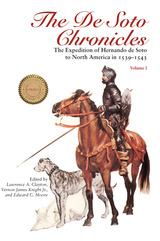
1993 Choice Outstanding Academic Book, sponsored by Choice Magazine.
The De Soto expedition was the first major encounter of Europeans with North American Indians in the eastern half of the United States. De Soto and his army of over 600 men, including 200 cavalry, spent four years traveling through what is now Florida, Georgia, Alabama, North and South Carolina, Tennessee, Mississippi, Louisiana, Arkansas, and Texas. For anthropologists, archaeologists, and historians the surviving De Soto chronicles are valued for the unique ethnological information they contain. These documents, available here in a two volume set, are the only detailed eyewitness records of the most advanced native civilization in North America—the Mississippian culture—a culture that vanished in the wake of European contact.

1993 Choice Outstanding Academic Book, sponsored by Choice Magazine.
The De Soto expedition was the first major encounter of Europeans with North American Indians in the eastern half of the United States. De Soto and his army of over 600 men, including 200 cavalry, spent four years traveling through what is now Florida, Georgia, Alabama, North and South Carolina, Tennessee, Mississippi, Louisiana, Arkansas, and Texas. For anthropologists, archaeologists, and historians the surviving De Soto chronicles are valued for the unique ethnological information they contain. These documents, available here in a two volume set, are the only detailed eyewitness records of the most advanced native civilization in North America—the Mississippian culture—a culture that vanished in the wake of European contact.

1993 Choice Outstanding Academic Book, sponsored by Choice Magazine.
The De Soto expedition was the first major encounter of Europeans with North American Indians in the eastern half of the United States. De Soto and his army of over 600 men, including 200 cavalry, spent four years traveling through what is now Florida, Georgia, Alabama, North and South Carolina, Tennessee, Mississippi, Louisiana, Arkansas, and Texas. For anthropologists, archaeologists, and historians the surviving De Soto chronicles are valued for the unique ethnological information they contain. These documents, available here in a two volume set, are the only detailed eyewitness records of the most advanced native civilization in North America—the Mississippian culture—a culture that vanished in the wake of European contact.

The De Soto expedition was the first major encounter of Europeans with indigenous North Americans in the eastern half of the United States. De Soto and his army of over 600 men, including 200 cavalry, spent four years traveling through what is now Florida, Georgia, Alabama, North and South Carolina, Tennessee, Mississippi, Louisiana, Arkansas, and Texas. The De Soto Chronicles Volume 1 and Volume 2 present for the first time all four primary accounts of the De Soto expedition together in English translation.
The four primary accounts are generally referred to as Elvas, Rangel, Biedma (in Volume 1), and Garcilaso, or the Inca (in Volume 2). In this landmark 1993 publication, Clayton’s team presents the four accounts with literary and historical introductions. They further add brief essays about De Soto and the expedition, translations of De Soto documents from the Spanish Archivo General de Indias, two short biographies of De Soto, and bibliographical studies.
For anthropologists, archaeologists, and historians, The De Soto Chronicles are valued for the unique ethnological information they contain. They form the only detailed eyewitness records of the most advanced native civilization in North America—the Mississippian culture—a culture largely lost in the wake of European contact.

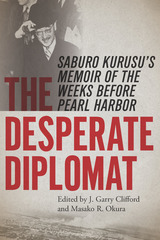
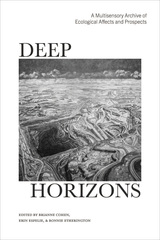
The specifics of ecological destruction often take a cruel turn, affecting those who can least resist its impacts and are least responsible for it. Deep Horizons: A Multisensory Archive of Ecological Affects and Prospects gathers contributions from multiple disciplines to investigate intersectional questions of how the changing planet affects specific peoples, communities, wildlife species, and ecosystems in varying and inequitable ways. A multisensory, artistic-archival supplement to the Mellon Sawyer Environmental Futures Project, the volume enriches current conversations bridging the environmental humanities and affect theory with insights from Native and Indigenous philosophies as well as by highlighting artistic practices that make legible the long-term durational effects of ecological catastrophe.
Poems, nonfiction essays, sound-texts, photographs, and other artworks invite readers and viewers to consider the less visible losses and prospects of environmental transformation. Gathering contributions from multiple disciplines, this multimodal, multisensorial volume pushes the boundaries of scholarship with an experimental, born-digital format that offers a set of responses to collective traumas such as climate change, environmental destruction, and settler colonialism. The artists and authors honor the specificity of real historical and material injustices while also reflecting the eclectic nature of such assorted feelings, working through them in creative and border-crossing modes.
With contributions from Robert Bailey, Nina Elder, Erin Espelie, Hock E Aye Vi Edgar Heap of Birds, Maya Livio, Erika Osborne, Craig Santos Perez, Kim Tallbear, Julianne Warren, and Kyle Powys White.
"The compelling juxtaposition of poetry, music, video, audio, photography, printmaking, and traditional essays is among Deep Horizons' considerable strengths. I don’t know of any other project quite like this one. The subject is timely—indeed, urgent—and the innovative approach to archiving environmental change will interest scholars and artists in a range of disciplines and resonate with a wide audience." —Jennifer Ladino, University of Idaho
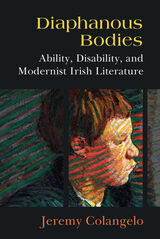
Diaphanous Bodies: Ability, Disability, and Modernist Irish Literature examines ability, as a category of embodiment and embodied experience, and in the process opens up a new area of inquiry in the growing field of literary disability studies. It argues that the construction of ability arises through a process of exclusion and forgetting, in which the depiction of sensory information and epistemological judgment subtly (or sometimes un-subtly) elide the fact of embodied subjectivity. The result is what Colangelo calls “the myth of the diaphanous abled body,” a fiction that holds that an abled body is one which does not participate in or situate experience. The diaphanous abled body underwrites the myth that abled and disabled constitute two distinct categories of being rather than points on a constantly shifting continuum.
In any system of marginalization, the dominant identity always sets itself up as epistemologically and experientially superior to whichever group it separates itself from. Indeed, the norm is always most powerful when it is understood as an empty category or a view from nowhere. Diaphanous Bodies explores the phantom body that underwrites the artificial dichotomy between abled and disabled upon which the representation of embodied experience depends.
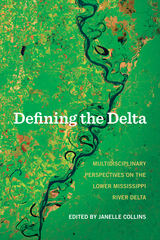
Here are essays examining the Delta’s physical properties, boundaries, and climate from a geologist, archeologist, and environmental historian. The Delta is also viewed through the lens of the social sciences and humanities—historians, folklorists, and others studying the connection between the land and its people, in particular the importance of agriculture and the culture of the area, especially music, literature, and food.
Every turn of the page reveals another way of seeing the seven-state region that is bisected by and dependent on the Mississippi River, suggesting ultimately that there are myriad ways of looking at, and defining, the Delta.

In Denver Inside and Out, eleven authors illustrate how pioneers built enduring educational, medical, and transportation systems; how Denver's social and political climate contributed to the elevation of women; how Denver residents wrestled with-and exploited-the city's natural features; and how diverse cultural groups became an essential part of the city's fabric. By showing how the city rose far above its humble roots, the authors illuminate the many ways that Denver residents have never stopped imagining a great city.
Published in time for the opening of the new History Colorado Center in Denver in 2012, Denver Inside and Out hints at some of the social, economic, legal, and environmental issues that Denverites will have to consider over the next 150 years. Finalist for the 2012 Colorado Book Awards
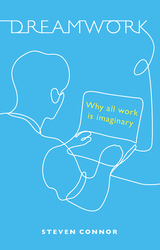
Dreamwork is a book about the ideas, dreams, dreads, and ideals we have about work. Its central argument is this: Although we depend on the idea of work for our identity as humans, we feel we must disguise from ourselves the fact that we do not know what work is. There is no example of work that nobody might, under some circumstances, do for fun. All work is imaginary—which is not to say that it is simply illusory, but rather that, to count as work, it must be imagined to be work. In other words, a large part of what we mean by working is this work of imagining. Work is therefore essentially mystical—just the opposite of what it is taken to be by all of us spending our days at desks, behind cash registers, and in factories. Delving into this complex mythos, Dreamwork looks in turn at worries about whether or not work is hard; the importance of places of work; the meanings of hobbies, holidays, and sabbaths; and the history of dreams of redeeming work.
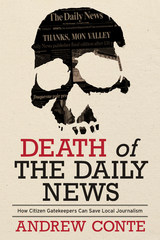
The City of McKeesport in southwestern Pennsylvania once had a population of more than fifty thousand people and a newspaper that dated back to the nineteenth century. Technology has caused massive disruption to American journalism, throwing thousands of reporters out of work, closing newsrooms, and leaving vast areas with few traditional news sources—including McKeesport. With the loss of their local paper in 2015, residents now struggle to make sense of what goes on in their community and to separate facts from gossip—often driven by social media. The changes taking place in this one Pennsylvania community are being repeated across the United States as hundreds of local newspapers close, creating news deserts and leaving citizens with little access to reliable local journalism. The obituary for local news, however, does not have to read all bad: Even in the bleakest places, citizens are discovering what happens in their communities and becoming gatekeepers to information for the people around them. In McKeesport, citizens are attempting to make sense of the news on their own, for better and worse. This experiment not only offers clues about what happens after a local newspaper dies, but also provides guidance to the way forward.

"I started out snorting a couple of lines a night and ended up injecting and snorting about three grams a day."--That could be your dentist talking.
"I worked a lot with hangovers and made lots of mistakes when coming down off acid."--That might be your nurse.
"The patient was waking up and I was out cold."--And that was some unlucky patient's anesthesiologist.
Professionals trusted with our well-being are the last people we suspect of drug addiction. And yet they are at least as likely as anyone else to abuse alcohol and other drugs--a well-kept secret finally aired and fully examined in this powerful book. Drawing on more than 120 personal interviews with addicted physicians, dentists, nurses, pharmacists, attorneys, and airline pilots and those who treat them, Robert Coombs gives us a startling picture of drug abuse among "pedestal professionals." He discusses addiction as an occupational hazard for those with the easiest access to drugs, the greatest sense of immunity to their perils, and the most extensive means (and reasons) for hiding their problems. Throughout, the interviewees' eloquent and often harrowing testimony reminds us of the human drama behind the exhaustive research and analysis presented here. Their bittersweet stories bear out Coombs's contention that recovering addicts, free of their magical elixirs, can become more complete people than they were before addiction.
From the biological, psychosocial, and spiritual roots of addiction to the equally diverse approaches to recovery, to the merits and failures of government drug policy, Drug-Impaired Professionals offers a clear and complete overview of a complex problem that affects nearly every family in America.
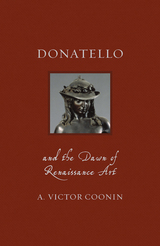
In this beautifully illustrated book—the first thorough biography of Donatello in twenty-five years—A. Victor Coonin describes the full extent of Donatello’s revolutionary contributions, revealing how his work heralded the emergence of modern art.
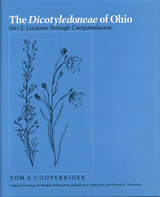

For both dogs and humans to get the most out of each other, we need to understand and adapt to the biological needs and dispositions of our canine companions, just as they have to ours.
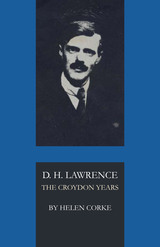
Croydon, England, was the setting of the famous three-way friendship of D. H. Lawrence, Jessie Chambers, and Helen Corke, all of whom made literary records of their association, and all of whom appeared as characters in Lawrence novels. Perhaps the most objective of these records were Helen Corke’s, which became difficult to acquire. Their scarcity and their continuing usefulness were the stimulus for publication of this volume, which contains in four statements Helen Corke’s “major comment on Lawrence the man and Lawrence the artist.”
The “Portrait of D. H. Lawrence, 1909–1910,” a section from Corke’s unpublished autobiography, gives the reader glimpses into the earliest stages of the Lawrence-Corke friendship, when Lawrence worked to bring meaning back into Corke’s life after she had suffered a tragic loss. The “Portrait” tells of conversations before a log fire, German lessons, the reading of poetry, and sessions over Lawrence’s manuscript “Nethermere,” which the publishers renamed The White Peacock. In “Portrait,” Corke tells of working with Lawrence on revising the proofs of this book, of Lawrence’s encouragement of her own literary efforts, of their wandering together in the Kentish hill country, and of her first meeting with Jessie Chambers.
“Lawrence’s ‘Princess’” continues the narrative of the triple friendship, carrying it to its sad ending, but with the focus on Jessie Chambers. Perceptively and sympathetically written, it throws a clarifying light on the psychology of Lawrence and presents with literary charm another human being—Jessie, the Miriam of Sons and Lovers.
In combined narrative-critique method, Corke, in the essay “Concerning The White Peacock,” relates Lawrence’s problems in writing this novel and gives an analysis of its literary quality.
Lawrence and Apocalypse is cast in the form of a “deferred conversation” in which Lawrence and Corke discuss his philosophical ideas as presented in his Apocalypse. Although the book was written to present Lawrence’s ideas, its significance reposes equally in Corke’s reaction to his thought. As a succinct statement of Lawrence’s teachings about the nature of humanity, it has unique value.

READERS
Browse our collection.
PUBLISHERS
See BiblioVault's publisher services.
STUDENT SERVICES
Files for college accessibility offices.
UChicago Accessibility Resources
home | accessibility | search | about | contact us
BiblioVault ® 2001 - 2024
The University of Chicago Press









